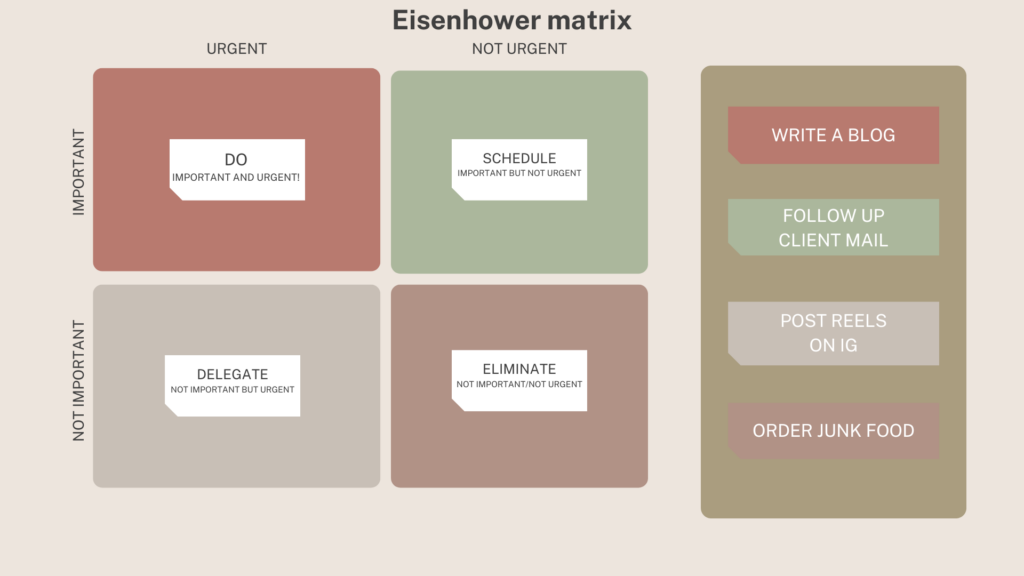Are you someone who wants to make the most of your time and be more productive at work? If so, you’re not alone. Many individuals struggle with finding effective ways to enhance their productivity and achieve better results in their professional lives. The good news is that you don’t have to go on a complex process or explore extravagant methods to increase your productivity. In this blog post, we will share ONE simple trick that can help you maximize your efficiency and boost your productivity without overwhelming you with fancy words or complicated strategies. So let’s freaking go!

The Power of Prioritization
The one simple trick we’re talking about here is the power of prioritization. Prioritization is the process of identifying and focusing on the most important tasks and activities that align with your goals and contribute the most value to your work. By consciously prioritizing your tasks, you can effectively manage your time, reduce stress which is always great, and achieve more in less time.

Understanding the Eisenhower Matrix

To boost your productivity, one practical framework for prioritization is the Eisenhower Matrix, named after former U.S. President Dwight D. Eisenhower. The matrix categorizes tasks into four quadrants based on their urgency and importance:
- Quadrant 1: Urgent and Important – These are tasks that require immediate attention and have a significant impact on your work or goals. Examples include deadlines, emergencies, or critical projects.
- Quadrant 2: Not Urgent but Important – This quadrant represents tasks that contribute to long-term success and personal growth. These tasks include planning, strategizing, skill development, and relationship building.
- Quadrant 3: Urgent but Not Important – These tasks often give an illusion of productivity but don’t necessarily contribute to your long-term goals. They usually involve interruptions, minor distractions, or unnecessary meetings. It’s important to minimize time spent on these tasks.
- Quadrant 4: Not Urgent and Not Important – Tasks in this quadrant are time-wasting activities that provide little or no value. Examples include excessive social media browsing, mindless web surfing, or idle gossip. It’s crucial to eliminate or reduce the time spent on these tasks.
Applying the Prioritization Technique
Now that you understand the Eisenhower Matrix, it’s time to apply this technique to increase your productivity. Just follow these simple steps:
Step 1: Identify your tasks – Start by making a list of all the tasks and activities you need to accomplish. This includes both work-related tasks and personal commitments that affect your productivity.

Step 2: Assess urgency and importance – Evaluate each task and assign it to the appropriate quadrant based on its urgency and importance. Be honest with yourself and avoid the temptation to categorize tasks based on how you feel about them.

Step 3: Prioritize Quadrant 2 – Once you have categorized your tasks, focus on Quadrant 2, the not urgent but important tasks. Allocate dedicated time for activities such as planning, skill development, or long-term projects. By investing time in Quadrant 2, you can prevent tasks from becoming urgent and reactive, leading to a more proactive approach to your work.

Step 4: Manage Quadrant 1 – While Quadrant 2 should be your priority, it’s essential not to neglect Quadrant 1. Urgent and important tasks require your immediate attention, and it’s crucial to address them promptly and efficiently and boost your productivity as well.

Step 5: Minimize Quadrant 3 and 4 – Be mindful of the tasks in Quadrants 3 and 4. Reduce or eliminate time spent on activities that don’t contribute to your long-term goals. Avoid unnecessary meetings, limit distractions, and develop a disciplined approach to managing your time.

Additional Tips for Effective Prioritization
Here are a few extra tips to make your prioritization efforts even more effective:
- Set realistic goals: Break down your long-term goals into smaller, achievable tasks. This will help you stay focused and motivated.
- Learn to say no: Don’t overload yourself with unnecessary commitments. Learn to decline tasks that don’t align with your priorities or overload your schedule.
- Delegate and collaborate: If possible, delegate tasks that can be handled by others, or collaborate with colleagues to share the workload and achieve goals more efficiently.
- Time blocking: Allocate dedicated time blocks for specific tasks or types of work. This helps create structure and ensures that you have focused time to complete important tasks.

Increasing productivity at work doesn’t have to be a hassle. By achieving the power of prioritization and applying the Eisenhower Matrix, you can gain control over your time and accomplish more in your professional life. The key is to focus on what really matters, be proactive, and minimize distractions.
Comments +